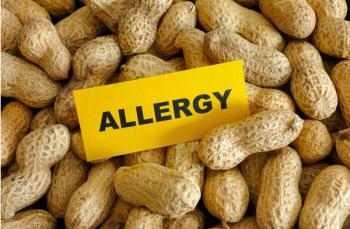ACC.21: High- and Low-Dose Aspirin Both Effective for Patients with Established Cardiovascular Disease

ACC.21: There was no difference found between high- and low-dose aspirin in terms of effectiveness and safety in patients with established CVD, according to new research.
There was no significant difference in cardiovascular events or major bleeding between patients with established atherosclerotic cardiovascular disease (ASCVD) assigned to a daily aspirin dose of 81 mg and those assigned 325 mg in the open-label, pragmatic ADAPTABLE trial.
The results were presented at the American College of Cardiology’s 70th Annual Scientific Session and simultaneously published online in
“There really hasn’t been a clear answer about what is the most effective and safe dose of aspirin for these patients,” said lead author William Schuyler Jones, MD, associate professor of medicine, Duke University Medical Center, Durham, North Carolina, in a
To determine the optimal dose of aspirin in patients with ASCVD, Jones and colleagues randomly assigned 15 076 participants with existing ASCVD from 40 centers in the US to receive 81 mg or 325 mg of daily aspirin.
Researchers collected information about patients’ medical histories and clinical events during the study through electronic medical records and insurance documentation. Participants were enrolled from April 2016 to June 2019, and median follow-up was 26.2 months.
The primary effectiveness endpoint was a composite of all-cause mortality, hospitalization for myocardial infarction (MI), or hospitalization for stroke. The primary safety endpoint was hospitalization for major bleeding with an associated blood product transfusion.
Before randomization, most participants (96%) were already taking aspirin and 85.3% of these patients were previously taking 81 mg of daily aspirin.
Mortality, hospitalization for MI, or hospitalization for stroke occurred in 590 patients (estimated percentage, 7.28%) in the 81-mg group and 569 patients (estimated percentage, 7.51%) in the 325-mg group (hazard ratio [HR], 1.02; 95% confidence interval [CI], 0.91-1.14).
Hospitalization for major bleeding occurred in 53 patients (estimated percentage, 0.63%) in the 81-mg group and 44 patients (estimated percentage, 0.60%) in the 325-mg group (HR, 1.18; 95% CI, 0.79-1.77).
“We found that there is no difference between the two doses in terms of effectiveness and safety, and we think that because the 81 mg dose had better long-term adherence, it may be the best choice for patients,” said Jones in the press release.
Patients who received 325 mg of aspirin had a higher incidence of dose switching compared to those who received 81 mg (41.6% vs 7.1%), as well as fewer median days of exposure to the assigned dose (434 days vs 650 days).
“Daily aspirin is an essential part of treatment for most people with heart disease. Patients and clinicians should use the information from the study to have a conversation about the dose of aspirin they prefer,” concluded Jones.
Newsletter
Enhance your clinical practice with the Patient Care newsletter, offering the latest evidence-based guidelines, diagnostic insights, and treatment strategies for primary care physicians.
















































































































































































































































































